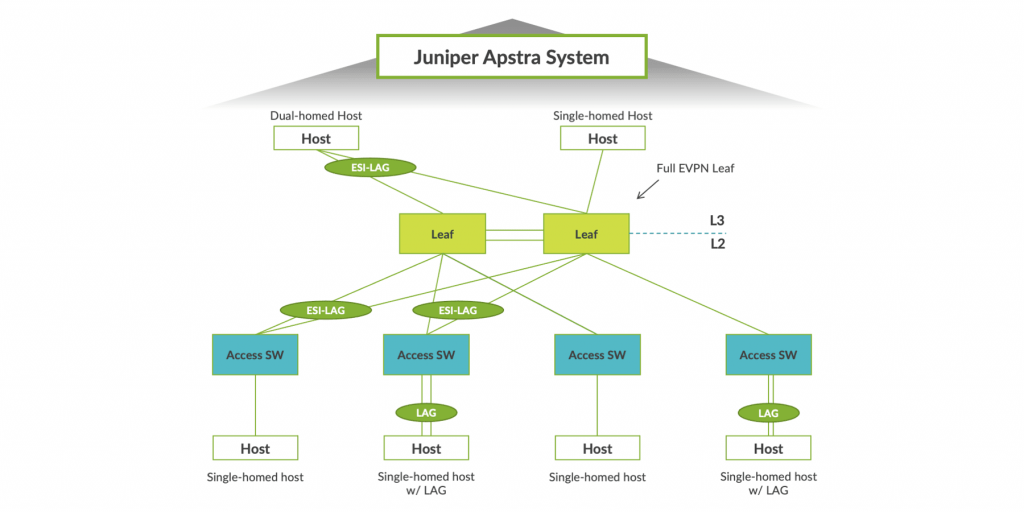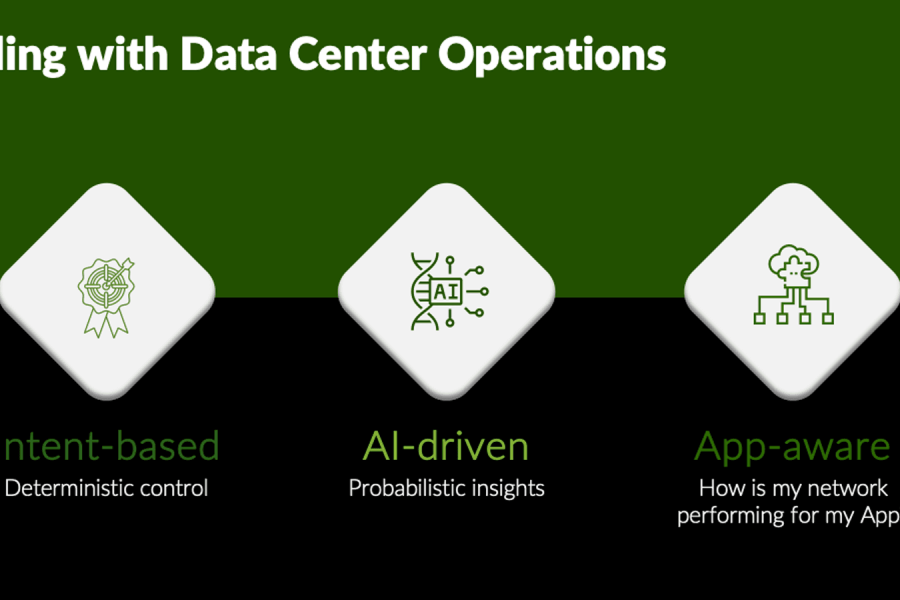The Apstra Solution to Edge Challenges

The edge. Although we may still be debating what it is and where exactly it is, one thing that analysts and futurists have agreed on is that it will be an integral part of IT and network strategy. While there seems to be boundless enthusiasm about potential edge use cases, some sensible and some farfetched, there hasn’t been enough talk about the practicalities of efficiently deploying and operating the infrastructure required to deliver these snazzy new services. In other words, how can IT teams make the business case work? This is where Juniper Apstra comes in to play.
The Edge
One of the most common, and probably most useful, definitions of the edge is that it’s “close enough to the user or data.” Essentially, the need for the edge is bolstered by the growing need for proximity among the location of users, data and applications. But why are we all talking about it? What are the realistic use cases for edge compute?
We’ll start with 5G, which is linked with the edge in some key ways. First, edge clouds will be a part of most 5G deployments because the radio access network (RAN) and other 5G components are being virtualized. Second, the new capabilities of 5G facilitate a host of multi-access edge computing (MEC) applications which, you guessed it, require more edge data centers.
But it’s not just 5G driving this interest in the edge. CDNs are the original edge computing use case, and they continue to grow in many dimensions (quantity, coverage and breadth of services to name a few). Communication service providers (CSPs) are making sizeable edge deployments to better serve their end users with low-latency compute and storage options for activities ranging from gaming to augmented reality (metaverse, anyone?) to real-time machine learning. Many large enterprises are following suit to avoid being at the mercy of their service providers. Factory automation and retail are among the more promising use cases, but we may have to wait a bit for edge compute-controlled autonomous vehicles to dominate our highways.
The truth is that most edge applications are driven by prosaic considerations that don’t necessarily make for catchy headlines. Distributed data processing can improve reliability as well as user experience. Data sovereignty requirements and privacy and security regulations may dictate local storage and processing. And finally, organizations can simply save a bundle in network traffic costs when data is processed locally rather than transmitted to a distant, centralized cloud.
On Edge
Edge deployments typically include a number of tiny data centers (from dozens for a small enterprise up to tens of thousands for a large CSP) spread across a wide geographical area. From a human capital perspective alone, it’s unlikely that each of these data centers will have dedicated staff. In fact, it’ll be difficult to staff network engineers on site even during the test and turn-up processes, not to mention the inevitable issues that come up after the initial deployment over the lifetime of your edge estate. One simply cannot economically manage a multitude of remote, dispersed data centers without a heavy dose of automation.
Apstra Collapsed Fabric
That’s why Juniper Networks is excited to introduce the Collapsed Fabric support from Apstra. This is a new capability that serves collapsed fabric architectures (also known as “collapsed spine”, or “spineless”) typically found in small, edge data centers. The capability makes it easy to build a collapsed fabric blueprint with the simple user interface, then stamp it out and use for every edge data center. The result: consistency, reliability and speed. Imagine a complete intent-driven networking solution for smaller-scale, highly distributed edge deployment use cases like the ones we touched on above – this is the power of Juniper Apstra.

With this solution, customers instantly have centralized visibility and control across their entire edge estate, through the full design, build, deploy and assure lifecycle. Apstra can now take any pair of devices, connect them in a full mesh topology, and provide all leaf, border leaf and spine functions. Apstra also makes it easy to add access devices to increase port count as needed. And while some may want that pair of leaf devices to be the “Swiss Army knife” Juniper QFX5700 switch, Apstra also supports a wide range of switches from other infrastructure vendors.
Keep in mind that connecting the compute, storage and functional elements necessary to successfully deliver a service to an end user requires reliable, automated networking. Not only does Apstra reduce costly CLI mistakes and allow any engineer to manage any device, it also drastically improves the time to deliver new edge services and speeds up any needed troubleshooting (as well as capacity planning). The solution is self-documenting, provides telemetry across every device (with a rewind feature), allows for view-only dashboards and enables fabric-wide configuration rollbacks.
For communication service providers, Apstra is a key part of our telco cloud strategy and cloud metro portfolio. And whether you’re a service provider or an enterprise, the mission of Juniper Apstra is to furnish customers with a data center fabric management and automation toolset to run their infrastructure with the efficiency and effectiveness of a cloud hyperscaler.
The Bottom Line
We all know that we need to be deploying compute and storage at the edge, close to our users and data sources. But massive distributed edge deployments have many of us on edge thinking about the inherent challenges. Apstra Collapsed Fabric enables small deployments (2 leaf switches comprising an entire EVPN fabric) to address markets that don’t need the scale of a full-blown Clos fabric, but still want the benefits of intent-based networking and analytics. With Juniper Apstra, the business case for edge use cases is now within reach.


